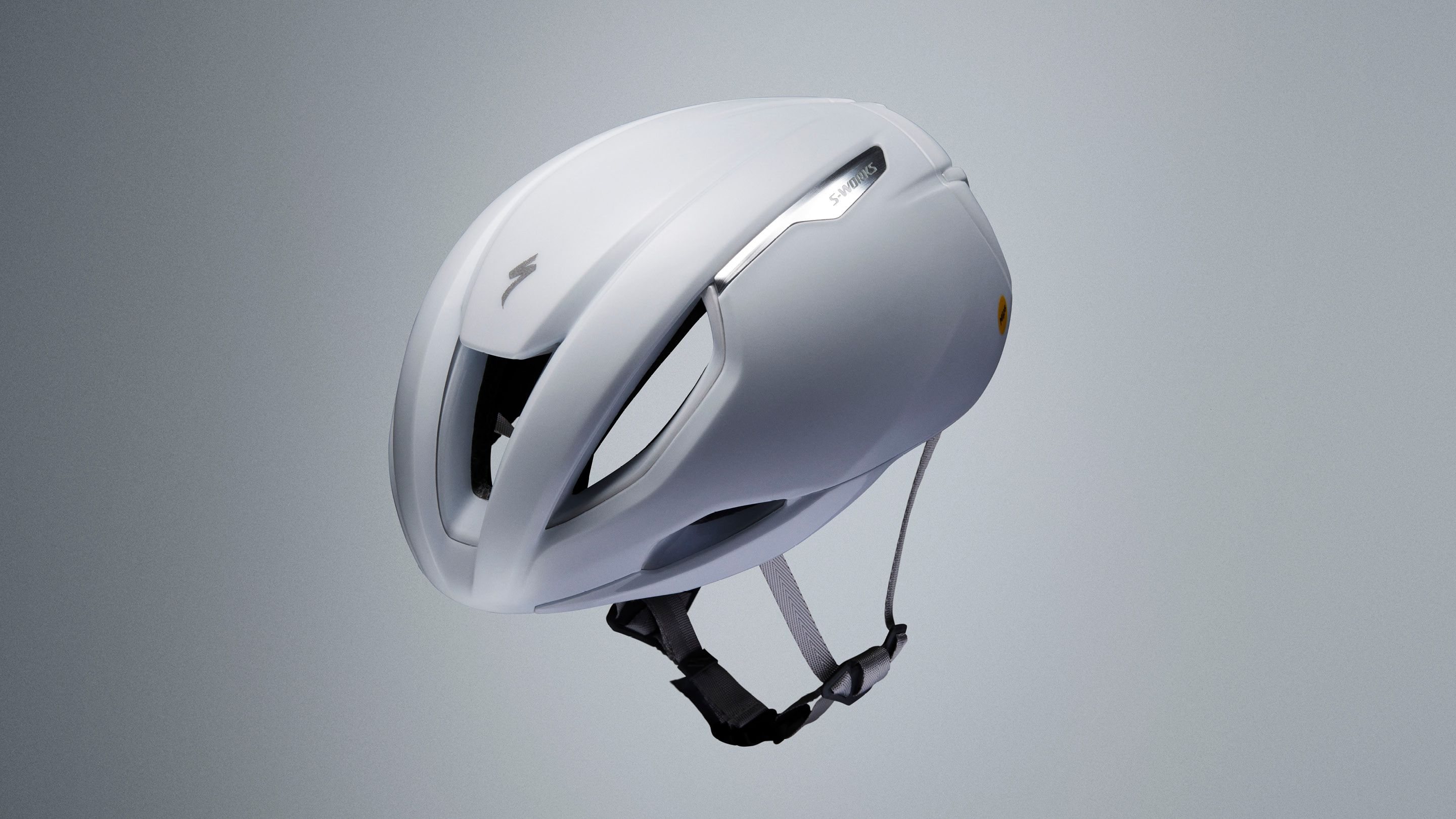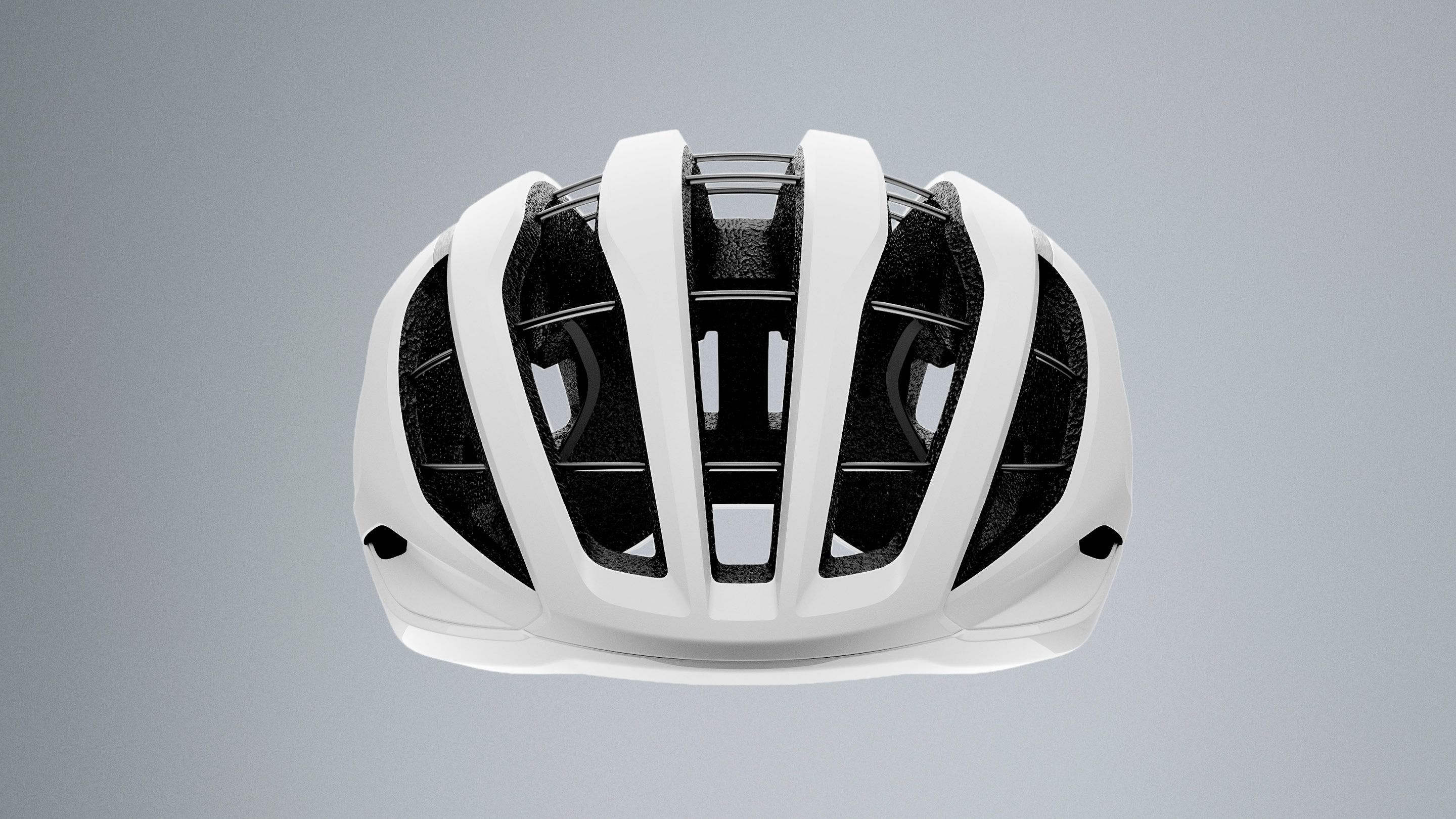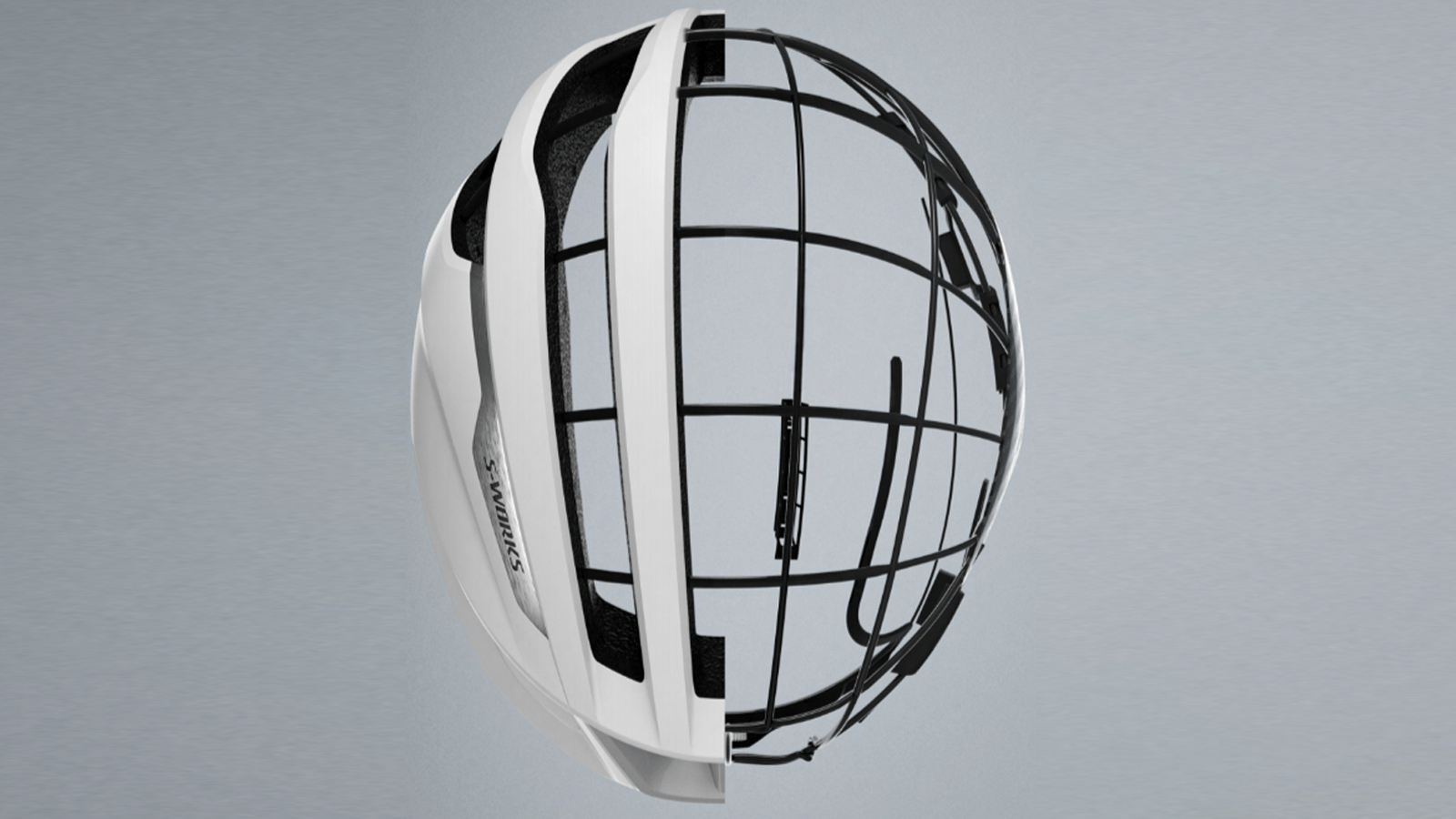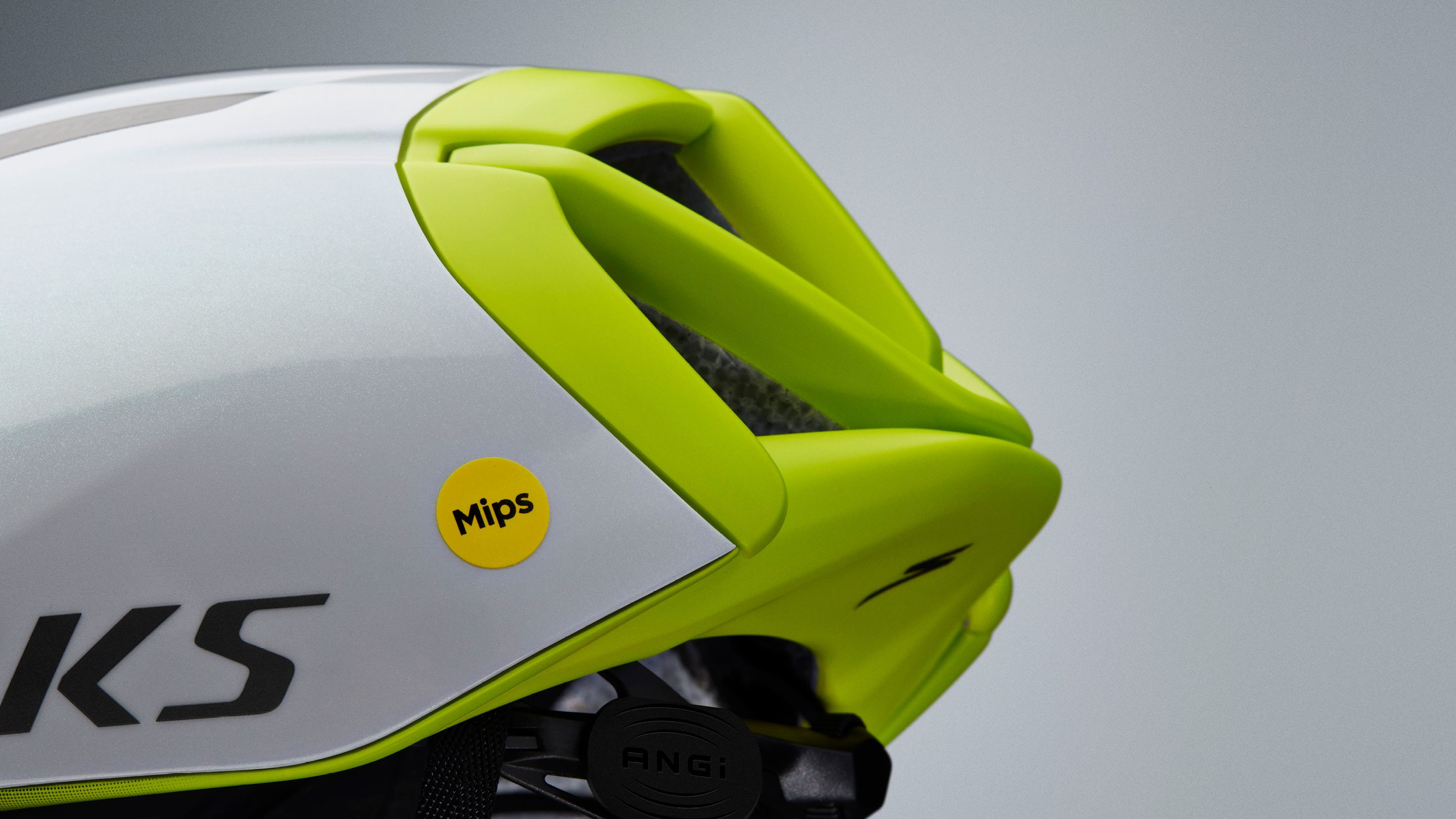Specialized overhauls helmet line with new aero, lightweight and TT models
All new Evade 3, Prevail 3 and TT5 will be used at the Tour de France

Each year, the week leading up to the Tour de France marks a flurry of new launches as brands attempt to capture some of the heightened interest in the sport. This year, whether due to the hangover from Covid-induced delays or otherwise, is shaping up to be the busiest in a long time, and today Specialized is joining the party.
Never ones to be outdone, Specialized has not one, not two, but three new products to launch. They're all helmets, and together, they mark a complete overhaul of the brand's performance road helmet lineup.
The launch includes the S-Works Evade 3, the S-Works Prevail 3 and the S-Works TT5, which, like the similarly titled products that they replace, are focussed on road aerodynamics, road ventilation, and time trials respectively.

Aero and airy
Starting with the new Evade 3, it may be a surprise to read that there are no claims of fractions of a watt saved at unattainably high speeds or seconds saved over the course of a 40km time trial. In fact, there are no claimed improvements in aerodynamics at all.
Instead, Specialized's focus is on an increase in breathability for its flagship aero road lid, and claims to have increased the helmet's ventilation by 10 per cent while maintaining the same aerodynamic properties. This, according to Specialized, makes it the fastest choice on more stages, citing the ability to use it in warmer temperatures than before.
This was achieved with the use of enlarged frontal vents to suck in more air, and a rear 'diffuser', which helps to reduce the drag, offsetting the reduced aero properties of those larger vents. The small vent across the top, which most aero helmets use to take advantage of the Venturi effect of speeding up the removal of hot air, has been removed too.
The Evade 3 will be priced at £275.00 / US$300.00 / AU$475.00, and is available in a choice of small, medium or large. It will be made to CE or CPSC safety standards, depending on the territory in which you buy, and will weigh between 260 and 300g in CE, or 290 and 350g in CPSC construction.
The latest race content, interviews, features, reviews and expert buying guides, direct to your inbox!

AirCage
Next up is the Prevail 3, and the main talking point here is how it builds on the technology introduced when Specialized launched the Prevail II Vent last year.
With the Vent, Specialized replaced some of the EPS foam 'bridges' with aramid fibre braces that were little more than 2mm thick. According to the brand, these could withstand the same amount of impact, but their minimal size meant an increase in breathability and a decrease in weight.
With today's launch, the Vent moniker has been dropped, but the vents themselves have grown enormously, as has the use of the aramid fibre braces. Those are now used for the horizontal bridges across the entire helmet, with five across the front quarter and three across the top of the helmet. The result is an increase in the ventilating surface area by 24.5 per cent when compared to the Vent.

What's more, by turning these carbon fibre braces into an entire skeleton around the head, Specialized says it has "rewritten the book on cycling helmet design". It is called Air Cage, and Specialized says this about it: "Upon impact, the AirCage technology works as a suspension bridge and is designed to distribute localized forces throughout the helmet." What's more, each of the braces is given an aerodynamic ovalised profile based on the shape of the Tarmac seatpost.
The Prevail 3 will also be priced at £275.00 / US$300.00 / AU$475.00, in three sizes across both CE and CPSC safety standards. Weights vary by size and the necessary safety requirements, ranging from 250 to 300g for CE and 280 and 320 for CPSC.

A new MIPS
Despite the Air Cage's claimed ability to manage rotational impacts, Specialized hasn't followed in Lazer's footsteps in stepping away from MIPS technology in favour of in-house solutions. Instead, both of the two new road helmets are given a new, proprietary-to-Specialized version of MIPS, called MIPS Air Node.
If you're wondering what MIPS is, it stands for Multidirectional Impact Protection System, and we've got a full explainer in our guide to MIPS helmets. But as with all MIPS systems, the promise of Air Node is that it will reduce rotational impacts, and according to Specialized, it's been integrated directly into the padding of each helmet.
According to the brand, this technology paired with the AirCage helps to make the Prevail 3 the second-highest scoring bicycle helmet in Virginia Tech's independent helmet testing ever.

Time trials and head socks
Making up for the lack of watt saving claims above is the last helmet to launch today, the TT5, which is a pure time trial helmet, and perhaps the one with the greatest divergence from its predecessor.
Specialized says it used CFD testing as well as wind tunnel testing with Remco Evenepoel and Kasper Asgreen to create it, and the result is a saving of, in Specialized's words: "26s saving on Remco's 40km time trial." The inclusion of 'Remco' there is oddly specific, but suggests testing at (or near) 50kph on a highly optimised setup in an aggressive riding position. The difference for other riders is likely to differ, but we can assume it will at least remain positive.
Either side of the rider's face, the helmet is designed to allow air to flow inside the helmet and through to the rear. This airflow though the helmet helps air flowing around it to flow off the back in the gap between the head and shoulders more smoothly, thus creating less drag. As part of this, the helmet's construction includes what Specialized is calling a "head sock", which, for want of a better description, is an integrated balaclava that smooths the contours of the ears, facial contours and hair.
When asked about the potential for heat buildup here, Specialized confirmed that the material used is thin, and that the increased airflow would offset any increase. It is claimed to help the helmet maintain an optimal position while riding, while MIPS Air Node features in the helmet's padding for rotational impact protection.
The helmet's lens is Class 1 in design, which relates to the quality of its construction and helps to avoid distortion. In addition, the lens is is given a hydrophobic and anti-fog coating to improve vision.
Keeping things simple, the TT5 is also priced at £275.00 / US$300.00 / AU$475.00 in a choice of three sizes, but won't be available in the UK until early 2023.
All three helmets will be worn by Specialized sponsored riders at the upcoming Tour de France, starting with the TT5 during Friday's prologue in Copenhagen.

Josh is Associate Editor of Cyclingnews – leading our content on the best bikes, kit and the latest breaking tech stories from the pro peloton. He has been with us since the summer of 2019 and throughout that time he's covered everything from buyer's guides and deals to the latest tech news and reviews.
On the bike, Josh has been riding and racing for over 15 years. He started out racing cross country in his teens back when 26-inch wheels and triple chainsets were still mainstream, but he found favour in road racing in his early 20s, racing at a local and national level for Somerset-based Team Tor 2000. These days he rides indoors for convenience and fitness, and outdoors for fun on road, gravel, 'cross and cross-country bikes, the latter usually with his two dogs in tow.